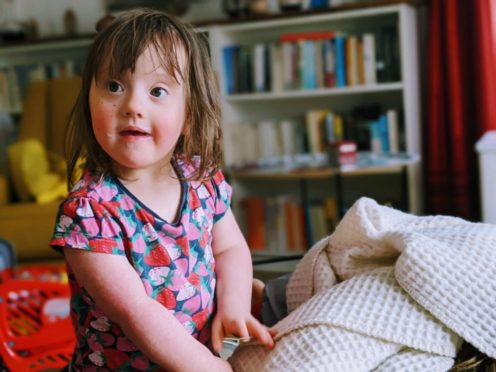
Where we live, the Covid infection rate was over 800 per 100,000 of population last week. That seems both high and, for my family, and others like us, worrying.
We may not be able to completely eliminate Covid, but we were told the strategy was to get to a point where vaccination meant numbers were so low that small fires could be extinguished quickly via test and protect. We’ve also heard repeatedly that positivity should be below 5% as an indication that we’re on top of the spread of infection.
It feels like the strategy has shifted, but without public discussion or acknowledgement. If we’re now looking at “harm reduction” rather than elimination, the reality is that either there’s a whiteboard somewhere that reads, “Who do we allow to be harmed?” or no one is actually addressing what is a deeply uncomfortable question.
My two-year old is one of many people at higher risk of harm from Covid. Rosa doesn’t have the option of being vaccinated so she’s every bit as unprotected as she was a year ago when we all felt much more vulnerable.
I don’t expect my daughter to live with zero risk. A few mild viruses put her in hospital during her first winter and it is the memory of what was, at times, a terrifying experience that are to the fore when I worry about her catching Covid. I accept that, to some extent, she is more susceptible to a whole range of bugs, and, in some ways, for us, Covid is just another. The problem though, is that, as cases rise, Covid does not seem like a just risk for Rosa but an inevitability.
When levels have been this high previously, we’ve been in full lockdown so she has been pretty safe in our little bubble. But now, because we’ve reduced the harm for the majority (a wonderful thing), she seems more exposed than ever before.
In the last week we’ve had one case at her nursery, and one at her brother’s school. Vaccination is truly amazing, but many people (including many of the young childcare workforce) still only have the roughly 30% protection offered by a single dose.
I’m as desperate as anyone to get back the daily joys we’re missing. One of the things I’ve found toughest has been how narrow my kids’ horizons have become. Rosa has never been to the museum (her brother Leo had been countless times by her age). She’s never been to soft play (despite being a prolific climber). She loves baby singing groups, but has only experienced them on a screen.
I long to get her out to experience new things, but, for now, her world must stay small, but, hopefully, safe.
I know there are no easy answers. What I find frustrating is the lack of an open discussion. I would like us to talk about questions like what level of virus is OK (if we can’t get rid of it completely)?
How are we ever getting out of this if, even with extensive vaccination, a combination of high infection levels here and a failure to ensure global access to vaccines means new, more resistant variants will continue to spread? Are kids at school and nursery going to keep being sent home by the class-load to isolate over and over again? Will vaccines be offered to children, including to under-12s with health issues?
And, above all, how do we pay proper attention to the people who have been impacted most by the pandemic, and not just leave them to yet again bear the heaviest burden of risk and sacrifice?

Enjoy the convenience of having The Sunday Post delivered as a digital ePaper straight to your smartphone, tablet or computer.
Subscribe for only £5.49 a month and enjoy all the benefits of the printed paper as a digital replica.
Subscribe